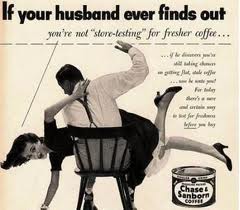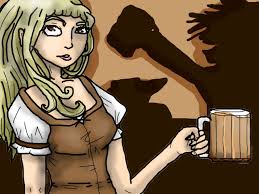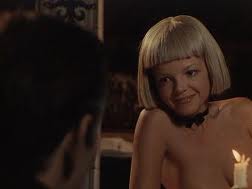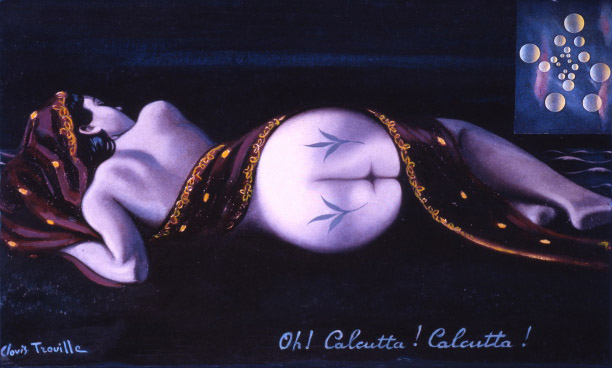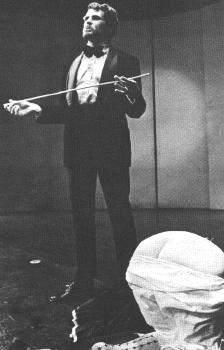Two girls would place themselves in front of him so his reaction to their solid, real, unglamorous and beautiful femaleness was placed between their bodies and out of sight of the audience. Most of the audience weren’t there to see his willie.
But hiding an erection between two pretty girls does very little to make it go away.
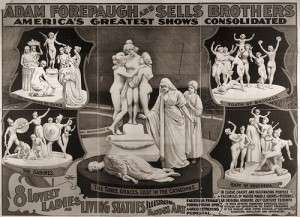
8 lovely ladies enacting the three graces, the rape of the Sabine Women, etc. Note that the guys about to rape the Sabine women have prop Roman shields, helmets and swords. Hi, budget!
In this club the tableaux vivants, viewed consecutively, told a story. There was a compere who actually told the story, but each time the lights went on, the tableau vivant performers would be posed to represent the next stage in the story.
It wasnt the sort of place that enacted classical or historical scenes. Their audience wasn’t interested, and wouldn’t get the references anyway. And it cost too much.
Instead they’d do domestic comedy. Like this:
Tableau 1: A working class father tells his daughters not to go out. (Man in cloth cap, loose overalls and moustache. Girls half-undressed, draped about and putting on stockings, facing the audience, or lipstick, with their asses to the audience.)
Tableau 2: The girls go out anyway. (Girls only. Their clothes have got caught in the doors, windows, furniture etc, as they sneak away.)
Tableau 3: They get into trouble. (Man, mostly or entirely naked, pretending to chase naked girls, who are pretending to run away.)
Tableau 4: Policeman makes them go home. (Man in policeman’s hat and carrying truncheon. Blowing inaudible whistle. Girls slumped and miserable. Two of them are between the audience and the “policeman’s” penis.)
Tableau 5: Girls try to sneak in, at home. (Girls only. Lots of ungainly nude posing, climbing through windows, up stage trees, etc.)
Tableau 6: But father catches them. (Outraged father with night-cap on head and belt in hand. Girls mock-cowering, two of them keeping his penis mostly out of sight. Later, they’d drape one of the girls over his lap. It did nothing to reduce his erection, but at least it made it easier to hide.)
That was a typical story. The “discipline” theme wasn’t quite bdsm. It was what passed for comedy at the time, and the idea of girls getting thrashed bare-assed by their fathers didn’t seem as abusive to a middle-aged 1960s audience as it would to a modern one.
But it wasn’t entirely bdsm-free, either. There was always a market for spanking and discipline themes, and it you did it as comedy you could get away with a lot that you wouldn’t get away with if you admitted it was erotic.
This is no time to be all knowing about “the English vice”. American television producers discovered the same thing at about the same time, which is why you got things like the wife-spanking scenes in The Lucy Show.
So that was my ancient drinking mate’s job, and one of my sources for knowledge about tableaux vivants. I’m back to the story of Sa’afia’s punishment night tomorrow.

